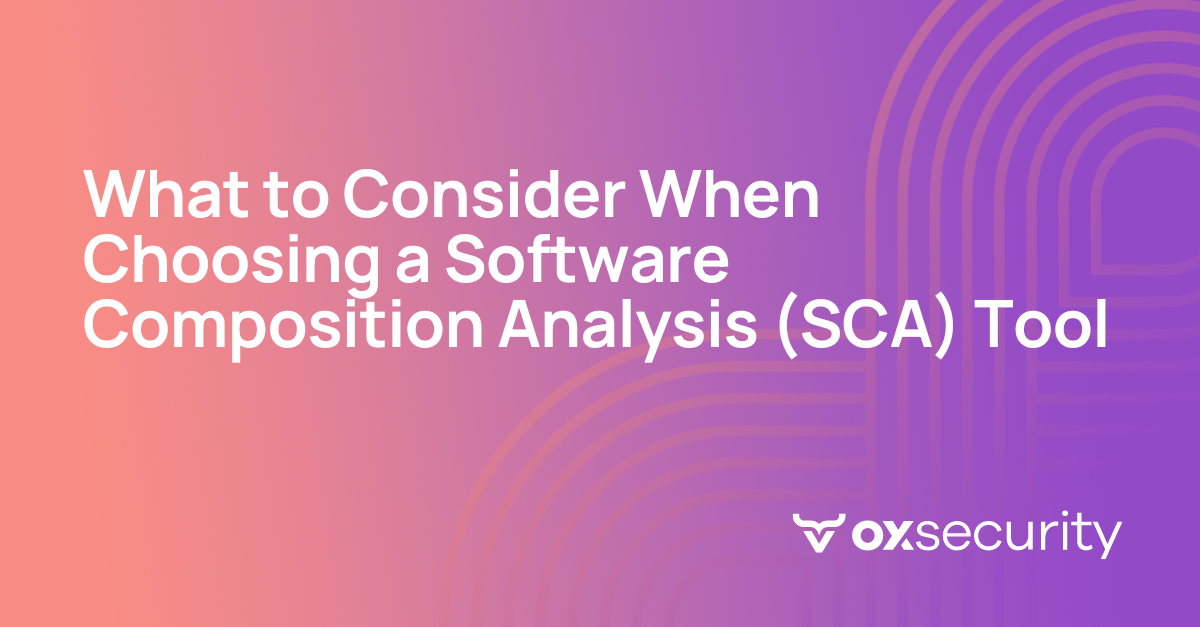Given the widespread use of third-party components in application development, identifying and remediating code vulnerabilities as early in development as possible is critical. As a result, many organizations turn to SCA tools, however traditional ones often deliver superficial code analysis that floods developers with irrelevant or non-actionable alerts, including numerous false positives. As you search for an SCA tool, it’s essential to choose one that meets your organization’s specific needs. Here are the key factors to consider:
Comprehensive Vulnerability Coverage
- Depth and Breadth of Database: The effectiveness of an SCA tool largely depends on the database it utilizes. Ensure that your chosen tool has a comprehensive and regularly updated database that encompasses both widely recognized vulnerabilities and lesser-known issues within open-source components.
Accuracy and Efficiency of Scanning
- False Positives and Alert Fatigue: Assess how the tool handles false positives and minimizes unnecessary alerts. An ideal SCA tool should significantly reduce alert fatigue by accurately identifying real threats and minimizing false alarms. Examine how the tool aggregates vulnerabilities and performs root cause analysis to consolidate multiple issues into single, actionable alerts, thereby reducing the noise.
- Scanning Speed: The tool should offer rapid scanning capabilities to integrate seamlessly into continuous integration/continuous deployment (CI/CD) pipelines, ensuring that it doesn’t hinder the development cycle.
Contextual Analysis and Prioritization
- Contextual Threat Assessment: It is vital that the SCA tool doesn’t treat all vulnerabilities equally. The tool should analyze how each component is utilized within your application to appropriately prioritize vulnerabilities based on their actual risk.
- Actionable Insights: The SCA tool should provide clear and actionable guidance for addressing vulnerabilities, including detailed information about each issue and prioritized steps for remediation based on their potential impact.
Dependency Management Capabilities
- Visualization of Dependencies: Opt for an SCA tool that offers a clear visualization of both direct and transitive dependencies. This feature is invaluable as it helps developers comprehend the full dependency structure of their projects, which is crucial for effective vulnerability management.
- Handling of Dependency Conflicts: Check if the tool provides solutions for version conflicts and other dependency-related challenges, which are common issues in managing third-party components.
Integration with Existing Toolchains
- Ease of Integration: The SCA tool should easily integrate into your existing development tools and workflows without the need for extensive modifications or complex configurations.
- Support for Different Environments: Ensure the SCA tool is versatile enough to support various project environments, whether containerized, based on microservices, or built using traditional architectures.
Read how SCA and SAST tools work together to improve your security.
Compliance
- License Compliance: An effective SCA tool should also aid in managing compliance with open-source licenses. This capability is essential to prevent legal problems related to the improper use of third-party software.
Conclusion
Selecting the right SCA tool is a strategic decision that significantly affects the security and efficiency of your software development lifecycle. By focusing on these critical considerations, you can choose a tool that not only meets your technical requirements but also enhances your team’s productivity and strengthens your application’s security posture.
Interested in deepening your understanding of application security? Download our comprehensive guide to Software Composition Analysis tools today.






)

